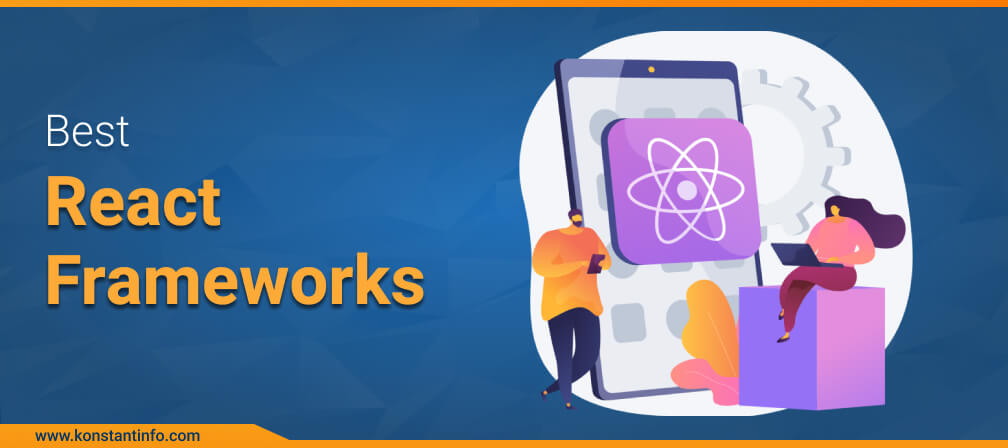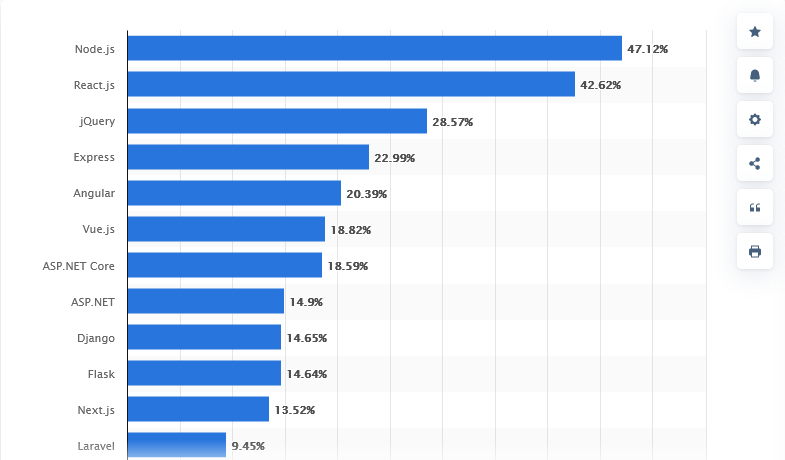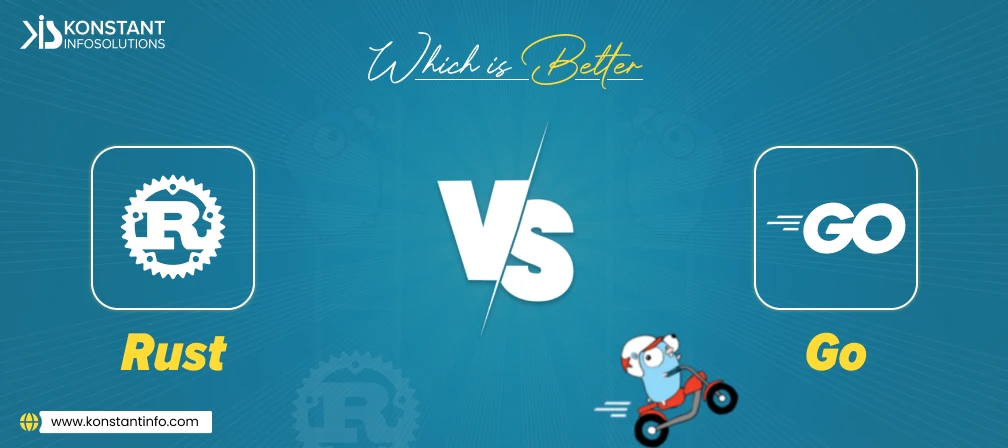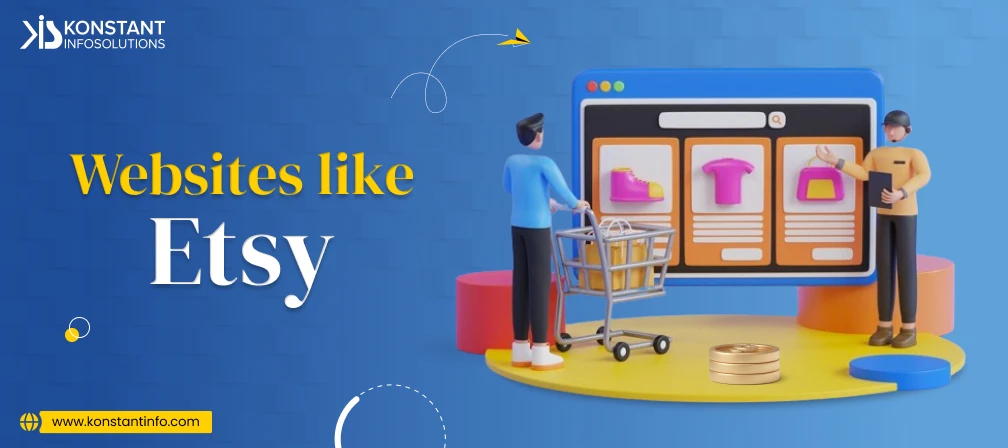
Table of Contents
The user interface is a momentous part of a website or app design. A better user experience leads to more likely customer actions. In response to the increasing focus on better user experiences, the best UI frameworks like React are becoming increasingly popular.
React is a JavaScript-based free and open-source front-end framework that facilitates the creation of robust and intuitive user interfaces by administration of the heavy lifting of the coding process.
Thanks to the inimitable service of React, many big brands including Dropbox, Instagram, Airbnb, Discord, Walmart, Wix and so many others to name are favoring the use of React framework.
Many front-end developers are moving to this technology. It is, however, difficult for developers to identify the best React UI frameworks in order to leverage their full potential.
If you’re also on the comparable page, then this blog has got you covered. Here you will uncover recommendations for a few of the best React JavaScript frameworks alongside their pros and cons to figure out which one is meant for you.
Before delving deeper into the recommendations of the best UI frameworks for React, let’s first apprehend the benefits of leveraging those frameworks:
This is one of the biggest benefits of React. It allows the developers to build complex UI in separate components rather than emphasizing creating the entire UI in one single attempt. This benefits results in the simplified process of creating complex UI in a speedy manner.
Furthermore, ReactJS employs the Virtual DOM that enables the developers to optimize the performance of the applications. A virtual DOM works by comparing two rendered trees to see what has changed, then applying those changes to the actual HTML document.
React is a document object model (DOM) which emphasizes the reusability of the components to ease developers’ efforts to write similar lines of code over and over again. In React, frontend developers can create a class and call its instance whenever a similar functionality is needed.
React comes with a variety of testing capabilities such as unit tests, integration testing, and end-to-end (e2e) tests to promote the development of bug-free applications.
React-based web applications are rich in terms of SEO which results in better ranking on search engines.
According to a report published in Statista, React.js is the second most favored web framework with 42.64% of developers emphasizing the use of React over other frameworks.

Image credit: Statista
The growing community means that you can find the answer to all your development queries with minimal effort.
Now, it is time to scrutinize the all-inclusive list of the best React UI frameworks that you can use to fetch your vision of a robust and intuitive user interface to a positive reality:
GitHub Stars: 82.7k
Material UI is a feature-packed React component library that underlines the development of UIs more efficiently. The MUI was developed in 2014 in order to combine the best features of React and Material Design into one package.
This React library offers a comprehensive collection of pre-built components that are ready for production. Moreover, every component puts the developers in great control. They can control the look and function of the components to add a personal touch to the user interface.
The capabilities of React’s Material UI can be assessed by the fact that it is used by major product teams named Spotify, Amazon, NASA, Netflix, Unity, and Shutterstock.
Features:
Pros:
GitHub stars: 96.7k
As one of the best lightweight React frontend frameworks, Next.js allows developers to develop fast, interactive, static sites and apps with high performance. Put simply, this react framework is meant to offer you the best developer experience starting from production to building the blocks to create web applications.
Next.js comes with no configuration, the framework comes with the automatic setup making it an easy choice even for novice developers, to begin with.
The popularity of the framework is rising and several big companies like Walmart, Apple, Nike, Netflix, TikTok, Uber, and Lyft are making use of the great capabilities of the framework.
Features:
Pros:
GitHub stars: 8.1K
Grommet is a React component library aimed at creating mobile-first code components for the web that are responsive and accessible. The framework accentuates the atomic design methods to put developers at great ease in designing that perfectly fits the needs of the customers.
Grommet is equipped with a vast collection of out-of-box patterns and starters to make sure every vision is translated into sure reality.
The framework is used by several big brands like Hewlett-Packard Enterprise, GitHub, Boeing, Samsung, Sony, Twilio, IBM, and so on.
Features:
Pros:
React Bootstrap is one of the most popular frontend frameworks that replaces the JavaScript Bootstrap framework.
The framework eliminates the dependency on bootstrap.js or JQuery, which result in the smooth development of each component using React. The framework shares compatibility with thousands of Bootstrap themes, therefore the implementation of the user interface is made easy.
Features:
Pros:
GitHub Stars: 82.9k
Ant Design is the world’s second most fortunate React UI framework for building beautiful products without immolating flexibility. The framework comes with a collection of high-quality React components that can be customized to cater to all the requirements of professional designers.
The framework offers dynamic theming capabilities using CSS as the foundation. Ant Design is open-source and available to use in all your projects at no cost.
Features:
Pros:
GitHub stars: 12.9k
Semantic UI is an open-source framework that stimulates the development of intuitive user interfaces. The framework provides the developers access to several pre-built tools that will result in rapid application development.
Moreover, Semantic UI lets developers control the appearance and behavior of the app. Semantic UI React was built as the foundation for a number of projects some of which are outlined below:
Features:
Pros:
GitHub stars: 29.8k
This component library enables developers to create blocks that ultimately result in React applications by allowing them access to modern, and simple components. The framework offers reusable and composable components, so developers can use it to build accessible front-end applications rapidly.
Chakra UI gives a lot of freedom in terms of styling and customization abilities, so developers can interpret the unique prosecution to the designing part.
Features:
Pros:
A number of front-end development professionals rely on React since its capabilities are unmatched. Furthermore, the capabilities of React are further boosted with the introduction of several best react UI frameworks.
Above we have discussed the 7 best React frameworks that are pushing developers to build robust and intuitive user interfaces with great ease. Although to utilize the capabilities of these React JavaScript frameworks, the prominence of Reactjs development company is irrefutable.
Konstant Infosolutions is one of the reliable web application development companies, you can trust upon to bring the vision of your design into a highly intuitive sure reality.
Every ReactJS framework comes with its own perks and cons. Therefore the selection of the best React framework solely depends upon your requirements. Thus, ensure that you are familiar with your requirements before choosing the framework that is best suited for them.
React simply refers to a JavaScript library that is used for the purpose of creating the skeleton of apps. On the other hand, React Native’s main purpose is to help developers build native mobile applications using components that can be reused.
Semantic UI React is one of the most popular React CSS frameworks. It allows the developers to build front-end applications using HTML and CSS.



Being indulged in the IT industry for more than 3+ years, I aim to offer up-to-date and latest knowledge on different technologies and trends setting the market. This is what I love to do. When I'm not working, I like to be near the outdoors surrounded by greenery.
Or send us an email at: [email protected]